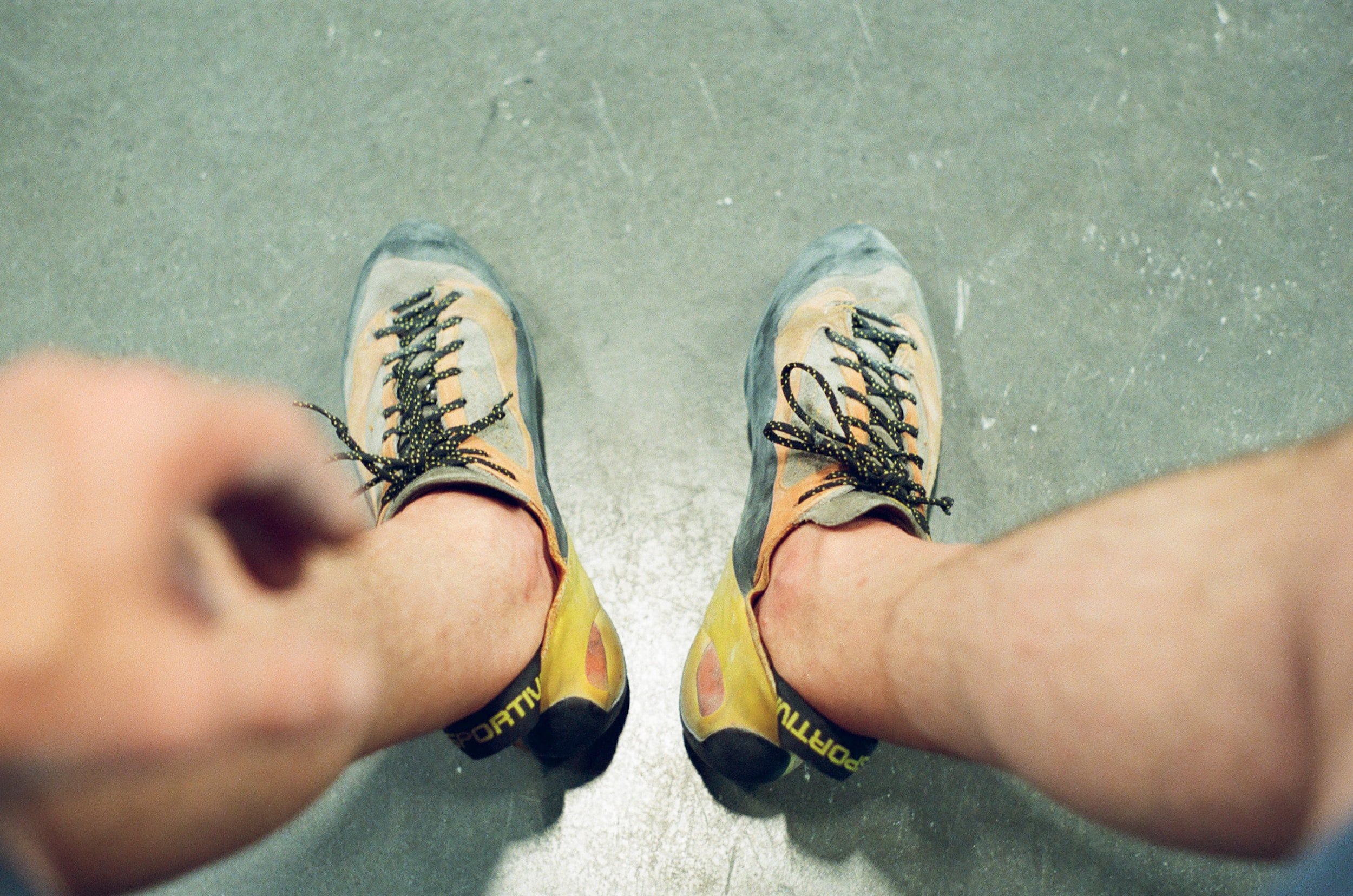Resoling Climbing Shoes: How and When?
Safety should be a priority in any sport. In climbing, the equipment you use plays a crucial role in how safe and enjoyable your experience is.
One of the essential pieces of equipment in the sport is your climbing shoes. Their soles are designed to provide you with a better grip on rocks or holds at a gym. With time, the material will lose grip, become thinner or develop holes, becoming a risk to your health and safety.
Instead of throwing away your shoes and having to buy new ones, a cheaper and more environmentally friendly option is resoling them. The resoling process involves replacing the worn-out rubber sole with a new one. Keep reading to learn more about resoling and when to do it.
The characteristics of a climbing shoe
As mentioned above, climbing shoes are specifically designed to provide maximum grip on various surfaces. The footwear must be flexible enough to allow you all the necessary movements.
Rubber sole
The sole of a climbing shoe is made of rubber, which means excellent traction on different surfaces. The material is usually thicker on the toe and heel, where you will often apply the most pressure when climbing.
Toe box
The toe box of climbing shoes is typically pointed or downturned, so athletes can use it to grip small edges or pockets on a rock. The point also gives people more control when standing on small holds.
Rand
The rand is a strip that wraps around the toe and, sometimes, the heel of the shoe. It protects the footwear from abrasion. However, they are not designed to stand a lot of weight or use. When you climb, the soles should get more use than the rand.
Lacing system
Climbing shoes have many different lacing systems, and it will depend on the climber’s experience and preference. Laces – which can even be velcro straps – will keep your shoes tight around your foot.
Last
The last is the shape of the shoe and how it fits the foot. There are three different types of lasts: flat, neutral and aggressive.
Flat and neutral shoes tend to be much comfier for long days on the rock or when climbing slab or less vertical terrain. On the other hand, an aggressive last has a downturned shape that enhances performance on steep terrain.
Upper
The upper part of climbing shoes is usually made of synthetic or leather materials that provide comfort and flexibility.
Heel cup
The heel cup of a climbing shoe is designed to hug the heel and prevent slippage. It is usually made of rubber, providing additional grip.
When to resole your shoes?
Resoling climbing shoes is a difficult task that should be performed by experts. Mistakes in this process can end up presenting risks to your climbing.
Professionals will be able to assess if your shoes need to be resoled or if usage or wear and tear have deemed them unusable. However, you can prolong the life of your equipment by inspecting it carefully and identifying potential problem areas.
Loose soles
If the soles of your shoes are loose, but the tip is intact, the problem might be easily solved with glue. An expert will do a better job fixing it, but it can also be done at home using PVC glue or special glue.
Make sure the area is thoroughly cleaned before applying the glue. Once the sole is attached, you can use a bit of tape or a heavy object to ensure it will stick.
Worn-out soles
A loose sole is not the only reason why you might consider resoling your shoes. With time, the sole of climbing footwear will wear down, losing grip and affecting performance.
If you notice that your shoes are not gripping as well or they have a noticeable smooth patch on the sole, consider contacting an expert to get your shoes resoled.
Holes on the tip or on the sole
Holes are probably the most common type of wear and tear in climbing shoes.
More experienced climbers will note holes more frequently on the tip of the shoe, not affecting the soles. If you do not address the problem, the hole will get bigger, becoming more uncomfortable and presenting risks to your climbing experience.
In the resoling process, experts will replace the tip with a new one and the sole.
Why resole your shoes?
You might think that resoling climbing shoes are an unnecessary hassle when you can buy new shoes and just replace old ones as soon as they present issues.
However, resoling is cheaper and can actually improve your performance. Here are some of the reasons why to consider this process.
It contributes to the climbing community
Using resoling services is a way to strengthen the climbing community.
The more services related to the sport we use, the more people can make a living within the climbing community.
Resoling shoes requires years of experience and a deep understanding of climbers’ necessities, which means it is a practice that can and should be, learned by athletes themselves. Encouraging the work shows appreciation for the craft and makes room for more people interested in climbing.
It saves money
We have discussed how much cheaper it is to resole your climbing shoes instead of buying new footwear.
Depending on the issue you are trying to address, you can even ask for a half resole, in which the professional will use less material, only what is necessary to fix the problem.
Specialised equipment is expensive, and buying new shoes at every glimpse of a problem will be a significant investment in the sport.
Climbers should also consider the environmental impact of indiscriminate consumerism. Buying new shoes means old shoes will be thrown away, contributing to Earth’s waste problem.
It is best to fix your old shoes whenever possible rather than discard them.
Improved performance
With time, your climbing shoes will adapt to your feet and climbing technique, becoming more comfortable and suitable for your adventures.
Adapting to a new shoe takes time and patience, which will most definitely end up affecting your performance. However, resoling shoes is like bringing the equipment back to its prime form while enjoying how it’s shaped to your feet. As a result, performance improves.
How is the resoling process done?
As discussed, resoling climbing shoes is an activity that should be done by professionals. Not only will they be able to ensure the new sole is aligned correctly and bonded, but they will also recommend the appropriate type of rubber to use and the thickness of the material based on your climbing style or the shoe brand.
Cleaning
The first step in the resoling process is cleaning. The professional will remove the old rubber sole from the shoe and then make sure any remaining adhesive is cleaned off.
Preparation
Once the shoe is cleaned, it is time to get a new rubber sole and cut it appropriately.
This is a step that highlights the importance of the work of a professional. They will be able to decide on the thickness of the new rubber sole and identify what areas of the shoe will need more attention according to your climbing style.
They can also decide if doing a half resole is possible, saving you money.
Adhesive
A special adhesive is applied to both the shoe and the new rubber sole.
Pressing
The new rubber sole is then positioned on the shoe, and pressure is applied to ensure a strong bond.
Trimming
Once the new rubber sole is positioned, any excess rubber is trimmed from the edges.
Curing
The shoe is then left to cure for the required period of time, allowing the adhesive to bond fully.
Finishing
In the last stage of the resoling process, any remaining rough edges or imperfections are smoothed out, and the shoe is cleaned and polished.
The importance of shoe care
Resoling is a necessity when the shoes are worn-out or damaged. As with any other type of sporting equipment, taking good care of your shoes will delay the need for a resole. Learning how to preserve your equipment also means you can save money on resoling.
Here are some tips on how to take good care of your climbing shoes.
1. Keep them clean
After each climb, wipe down your shoes with a clean cloth to brush off any dirt. If your shoes are particularly muddy or smelly, you can wash them in cool water using a mild detergent.
You shouldn’t clean your shoes with hot water or bleach, as they can damage your shoes’ rubber and other materials.
2. Air them out
After cleaning your shoes, allow them to air dry completely before storing them. Avoid exposing them to direct sunlight or high temperatures, as this can cause the rubber to break down.
3. Store your shoes properly
Your climbing shoes should be stored in a cool, dry place away from direct sunlight.
Avoid cramming them into a tight space or leaving them in a damp or humid environment, as this can cause mould.
4. Avoid using them to walk
Climbing shoes are designed to be used on rock, not pavement or other hard surfaces. Avoid walking in your climbing shoes, which can wear down the rubber and reduce their performance.
5. Use chalk sparingly
Chalk can help improve your grip on the rock but can also clog up the tiny pores in the rubber. Use chalk sparingly and avoid applying it directly to the soles of your shoes.
Final thoughts
Resoling climbing shoes is an excellent way to bring your equipment back to its former glory without spending too much money.
The process should be done by a professional with the expertise to assess the thickness and placement of the new rubber.
Learn the characteristics of your shoes, how to take good care of them and pay attention to the situations in which a resole might be necessary. Resoling should be done at the first sign of issues, so as not to present risks to your climb or damage the shoes beyond repair.






